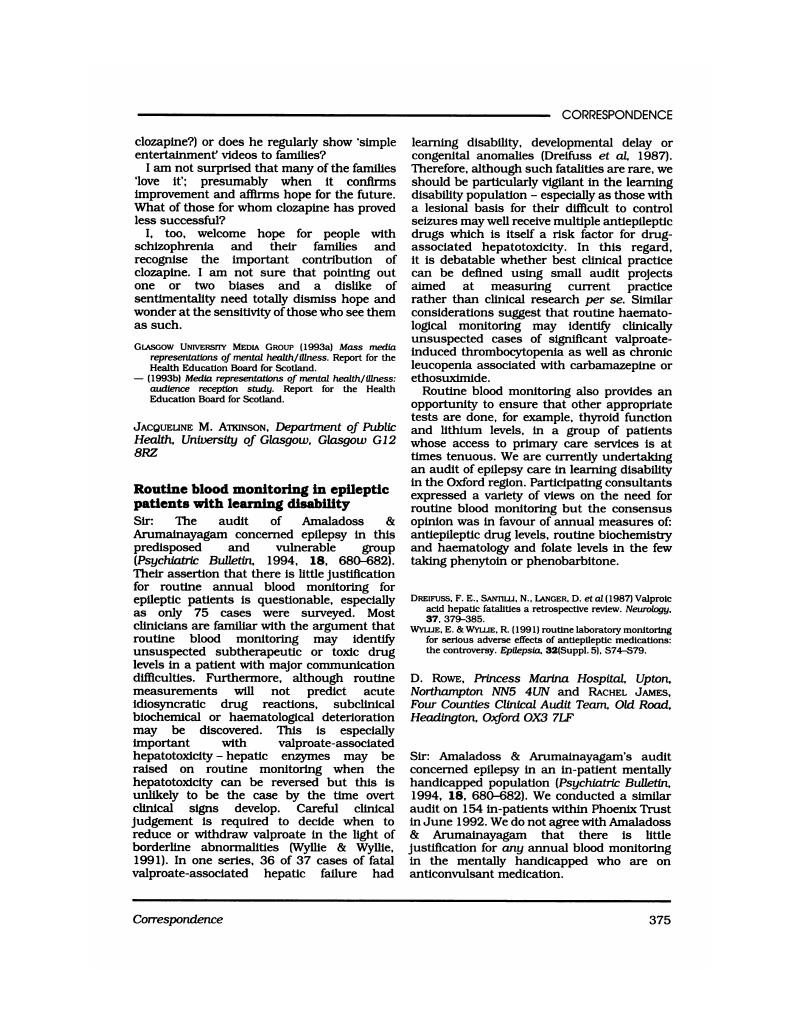Crossref Citations
This article has been cited by the following publications. This list is generated based on data provided by Crossref.
Beber, Elizabeth
Bailey, Nicola M
and
Cooper, Sally-Ann
1999.
Health gain for epilepsy associated with learning disabilities psychiatric care.
Irish Journal of Psychological Medicine,
Vol. 16,
Issue. 2,
p.
46.




eLetters
No eLetters have been published for this article.